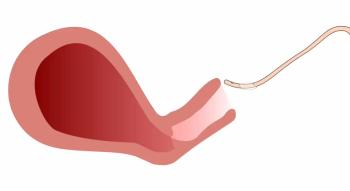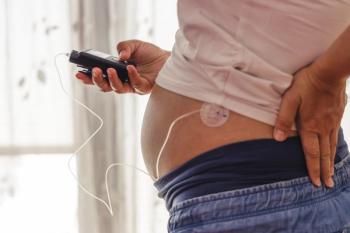
Contemporary OB/GYN week in review: Worsening maternal care, general anesthesia, and more
Review some of the top stories from the Contemporary OB/GYN website over the past week and catch up on anything you may have missed.
This week at Contemporary OB/GYN®, we covered topics ranging from worsening maternal care in the United States to reduced wound complications from prophylactic antibiotics. Click the links below to read anything you might have missed from Monday, November 17, to Friday, November 21, 2025.
Michael Warren, MD, MPH, FAAP, warns of worsening US maternal care
In a recent discussion with Contemporary OB/GYN, Michael Warren, MD, MPH, FAAP, Chief Medical and Health Officer of March of Dimes, highlighted significant concerns about the current state of maternal care in the United States, emphasizing the critical issue of access.
March of Dimes’ 2024 Maternity Care Desert Report revealed that more than one-third of US counties qualify as maternity care deserts—areas without obstetric providers, including OB-GYNs, family physicians who deliver babies, or midwives, and without hospitals or birthing centers offering maternity services. While these deserts are more common in rural regions, they are not exclusive to them. Warren noted that individuals living in these areas must travel significantly farther to receive prenatal or delivery care and face a higher likelihood of adverse outcomes for both mother and infant.
Mark Neuman, MD, discusses benefits of general anesthesia in childbirth
In an interview with Contemporary OB/GYN, Mark Neuman, MD, discussed findings from a meta-analysis evaluating neonatal outcomes associated with general anesthesia compared with neuraxial anesthesia—spinal or epidural—during cesarean delivery.
Neonates exposed to general anesthesia had modestly higher rates of requiring respiratory support, but the researchers found no significant differences in NICU admission rates. Neuman emphasized, however, that many included studies were small, dated, or conducted outside the United States, limiting the ability to assess rare outcomes such as neonatal death or longer-term developmental effects. As a result, he stressed the need for more contemporary, US-based research that evaluates both immediate and long-term child health outcomes after anesthetic exposure.
Gary Elkins, PhD, highlights the efficacy of self-hypnosis against hot flashes
A recent randomized clinical trial led by Gary Elkins, PhD, professor at Baylor University, examined the effectiveness of self-administered clinical hypnosis in reducing hot flashes among postmenopausal women and breast cancer survivors.
Participants were assigned to either a 6-week self-hypnosis program or a sham hypnosis control that matched the intervention in session number and contact time. By the end of the 6-week period, women using self-hypnosis experienced an average 53% reduction in hot flashes.
Notably, this improvement continued even after the intervention ended. At 3 months, reductions exceeded 60% overall, with breast cancer survivors achieving approximately a 64% decline. These findings underscore the durability of benefits as women continued independently practicing self-hypnosis after the study period.
Katherine Perslev discusses reduced wound complications from prophylactic antibiotics
In a recent interview with Contemporary OB/GYN, Katherine Perslev, doctoral student affiliated with Herlev Hospital, discussed new evidence regarding the risk of wound complications following vaginal delivery and the potential benefits of prophylactic antibiotics for women with second-degree perineal tears or episiotomies.
Perslev described outcomes from a randomized controlled trial of 442 women who received either prophylactic oral antibiotics or placebo after episiotomy or second-degree tears. Although a broad definition of wound complications showed a nonsignificant overall reduction, clinically relevant complications dropped from 17% in the placebo group to 9% in the antibiotic group, which was a statistically significant reduction.
Women who received antibiotics also reported better subjective health, needed fewer additional antibiotic prescriptions, and required fewer extra follow-up visits. Importantly, no increase in side effects was observed between the groups.
Permanent contraception procedures surge post-Dobbs
Researchers from Penn State and other locations have identified increased proportions of women seeking permanent contraception following the US Supreme Court’s Dobbs v. Jackson Women’s Health Organization decision ending the federal constitutional right to abortion in June 2022, publishing their findings in Contraception.
These increases included a 51% rise in tubal ligation procedures among women attending 1 of 4 academic medical centers. Access to reproductive health options was commonly cited as a reason for seeking permanent contraception, with 47% of patients in New York and Pennsylvania having their decision influenced by the current political climate.
“The Dobbs decision was an inflection point that made people think about their future plans,” said Sarah Horvath, MD, MSHP, study co-author and associate professor at Penn State. “More than anything, we saw that the Dobbs decision impacted the timing for people seeking tubal ligations more than it influenced the actual decision to have the procedure.”
Newsletter
Get the latest clinical updates, case studies, and expert commentary in obstetric and gynecologic care. Sign up now to stay informed.















